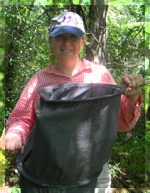Nicole E. Vachter
Currently: Bird and Reptile Keeper, Roosevelt Park Zoo
in Minot NDContact: Nicole
Lake Forest Biology Senior Thesis 2012-2013
Thesis: The effects of savanna restoration on ant communities
Abstract: Temperate savannas are an important ecotone between prairies and forests. I studied the effects of savanna restoration on ant communities because ants are important ecosystem engineers. Specifically, I studied the most effective way to sample ants in temperate savannas, and how savanna restoration efforts influence ant species communities. I sampled 21 sites using pitfall traps and leaf litter sifting methods. Pitfall traps were more efficient due to their ability to capture a higher number of species rapidly with less effort. Ant species richness increased with age of restoration. Myrmica punctiventris is a potential indicator of high quality savanna habitats because it was collected in eight of the higher quality sites by one trapping method (pitfalls). Temnothorax schaumii is a common species in sites that had been restored 7-15 years and may also be a potential indicator of restoration success. These results may help restoration managers focus their efforts and resources.
Publications
Menke, S.B., E. Gaulke, A. Hamel, and N. Vachter. 2015. The effects of restoration age and prescribed burns on grassland ant community structure. Environmental Entomology, DOI: 10.1093/ee/nvv110.
Menke, S.B. and N. Vachter. 2014. A comparison of the effectiveness of pitfall traps and Winkler litter samples for characterization of terrestrial ant (Formicidae) communities in temperate savannas. The Great Lakes Entomologist, 47(3-4):149-165.

